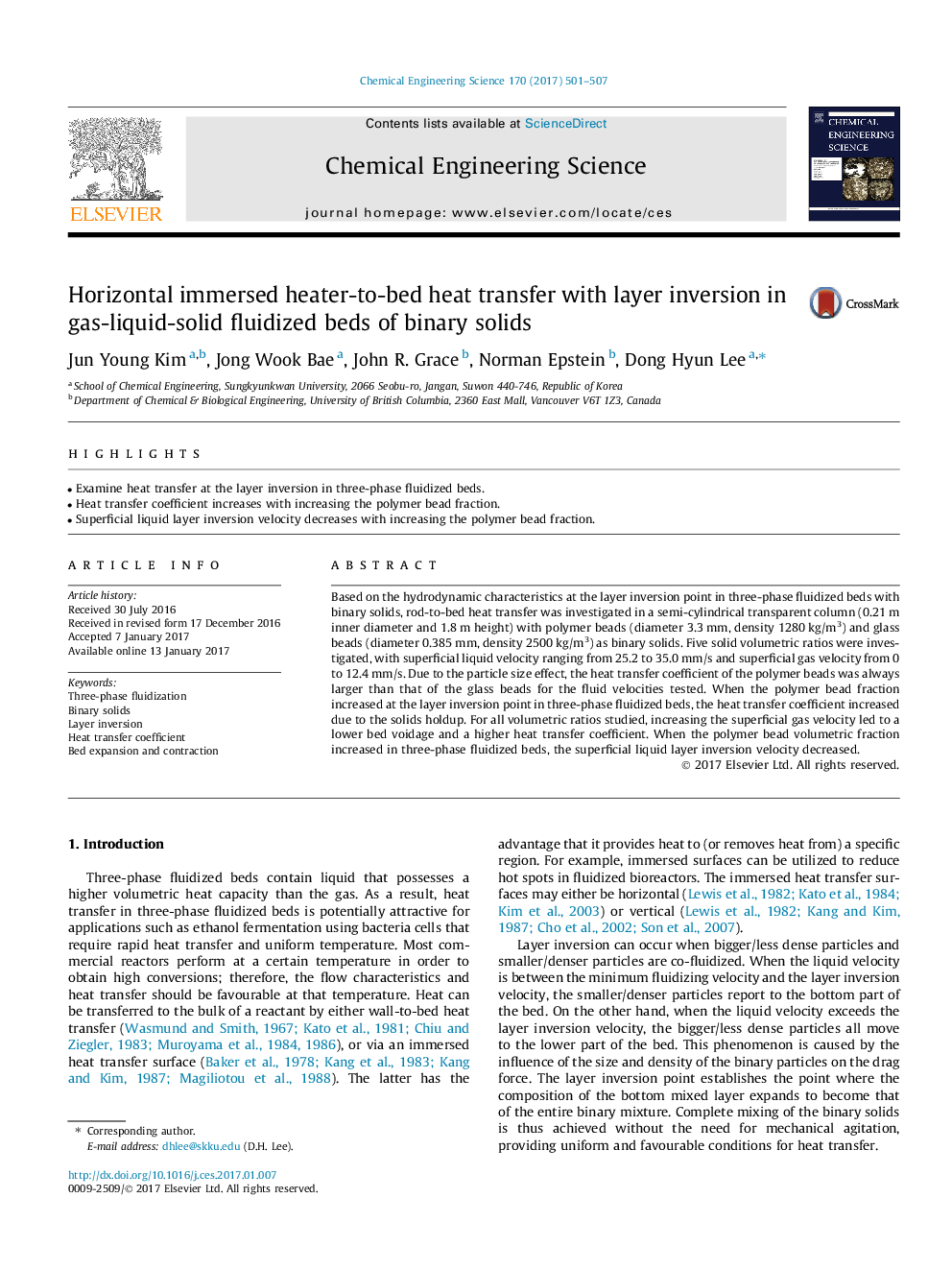| Article ID | Journal | Published Year | Pages | File Type |
|---|---|---|---|---|
| 6467282 | Chemical Engineering Science | 2017 | 7 Pages |
â¢Examine heat transfer at the layer inversion in three-phase fluidized beds.â¢Heat transfer coefficient increases with increasing the polymer bead fraction.â¢Superficial liquid layer inversion velocity decreases with increasing the polymer bead fraction.
Based on the hydrodynamic characteristics at the layer inversion point in three-phase fluidized beds with binary solids, rod-to-bed heat transfer was investigated in a semi-cylindrical transparent column (0.21Â m inner diameter and 1.8Â m height) with polymer beads (diameter 3.3Â mm, density 1280Â kg/m3) and glass beads (diameter 0.385Â mm, density 2500Â kg/m3) as binary solids. Five solid volumetric ratios were investigated, with superficial liquid velocity ranging from 25.2 to 35.0Â mm/s and superficial gas velocity from 0 to 12.4Â mm/s. Due to the particle size effect, the heat transfer coefficient of the polymer beads was always larger than that of the glass beads for the fluid velocities tested. When the polymer bead fraction increased at the layer inversion point in three-phase fluidized beds, the heat transfer coefficient increased due to the solids holdup. For all volumetric ratios studied, increasing the superficial gas velocity led to a lower bed voidage and a higher heat transfer coefficient. When the polymer bead volumetric fraction increased in three-phase fluidized beds, the superficial liquid layer inversion velocity decreased.
